Euphrosyne Polotskaya State University of Polotsk is the successor of centuries-old traditions of education in Polotsk. The project Glorious Chronicle aims to present the rich history of the university and the people who made a name for themselves and their alma mater. This is all about graduates of different time periods.
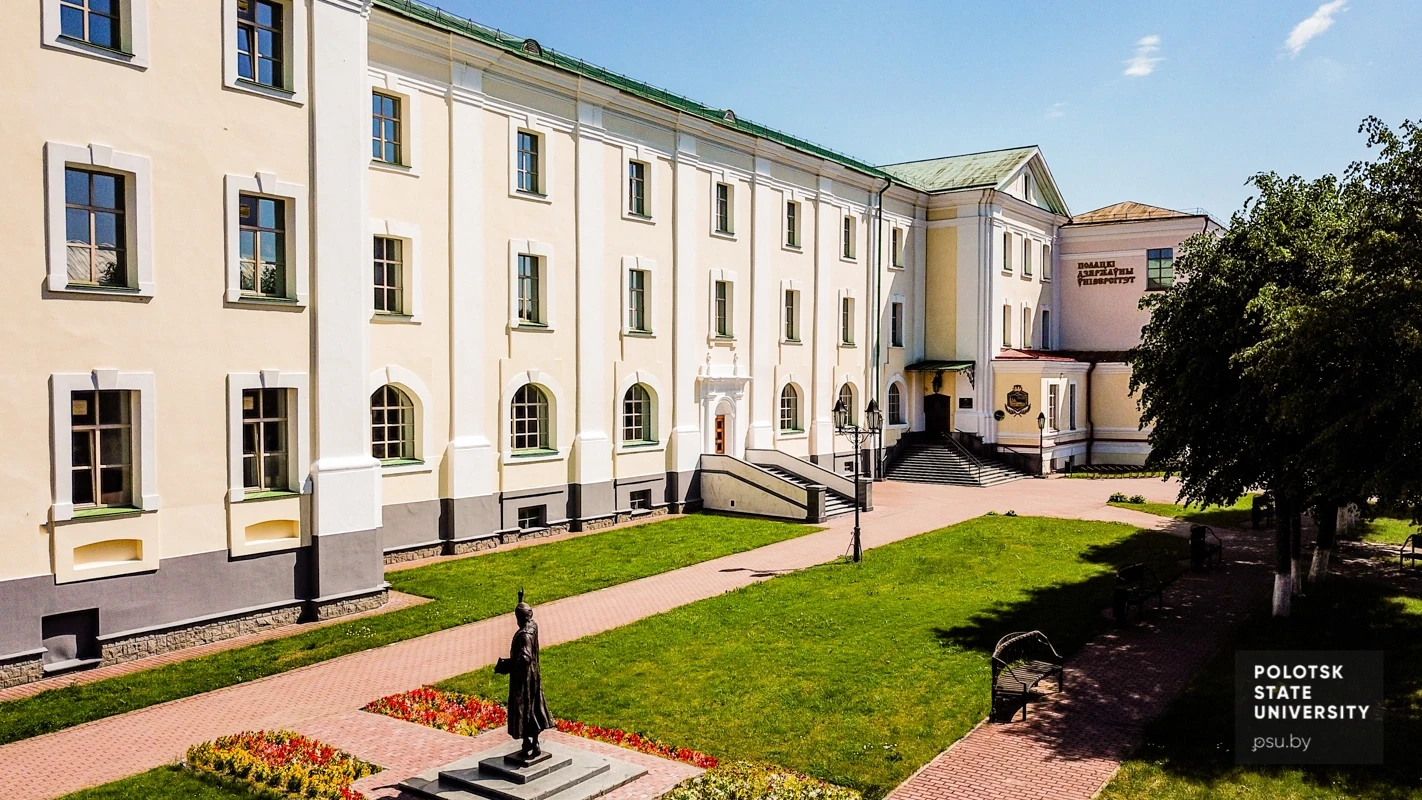
Polotsk Collegium
Polotsk Collegium is a unique historical monument of Belarus, which has a rich centuries-old history. Being a symbol of the educational tradition of Polotchina, the collegium has always remained the center of culture and education of the Belarussian land.
In 1812, the collegium was transformed into Polotsk Jesuit Academy, which worked until 1820. According to legend, during the attack in Polotsk on October 7, 1812, the 1st Russian Infantry Corps under the command of cavalry General Petr Wittgenstein, while firing at the positions of the French and Bavarians from Russian artillery pieces, one of the balls flew through the window of the first floor of Polotsk Jesuit Academy and up to half was firmly embedded in the wall. Later it turned out that it was a bomb that did not explode only due to the fact that the wick hole was inside the wall.
On June 25, 1835, Polotsk Cadet Campus was opened instead of the academy. For its pupils, the core served as clear evidence of the heroic history of the war of 1812, in which their ancestors participated. Above the core was fixed a copper semicircular plate with the inscription ‘October 7, 1812’. Soon there were also traditions associated with it. The image of Wittgenstein Core was later placed on the badges of Polotsk Cadet Campus and on the badges of its completion, which made it possible to immediately recognize Polotsk cadets.
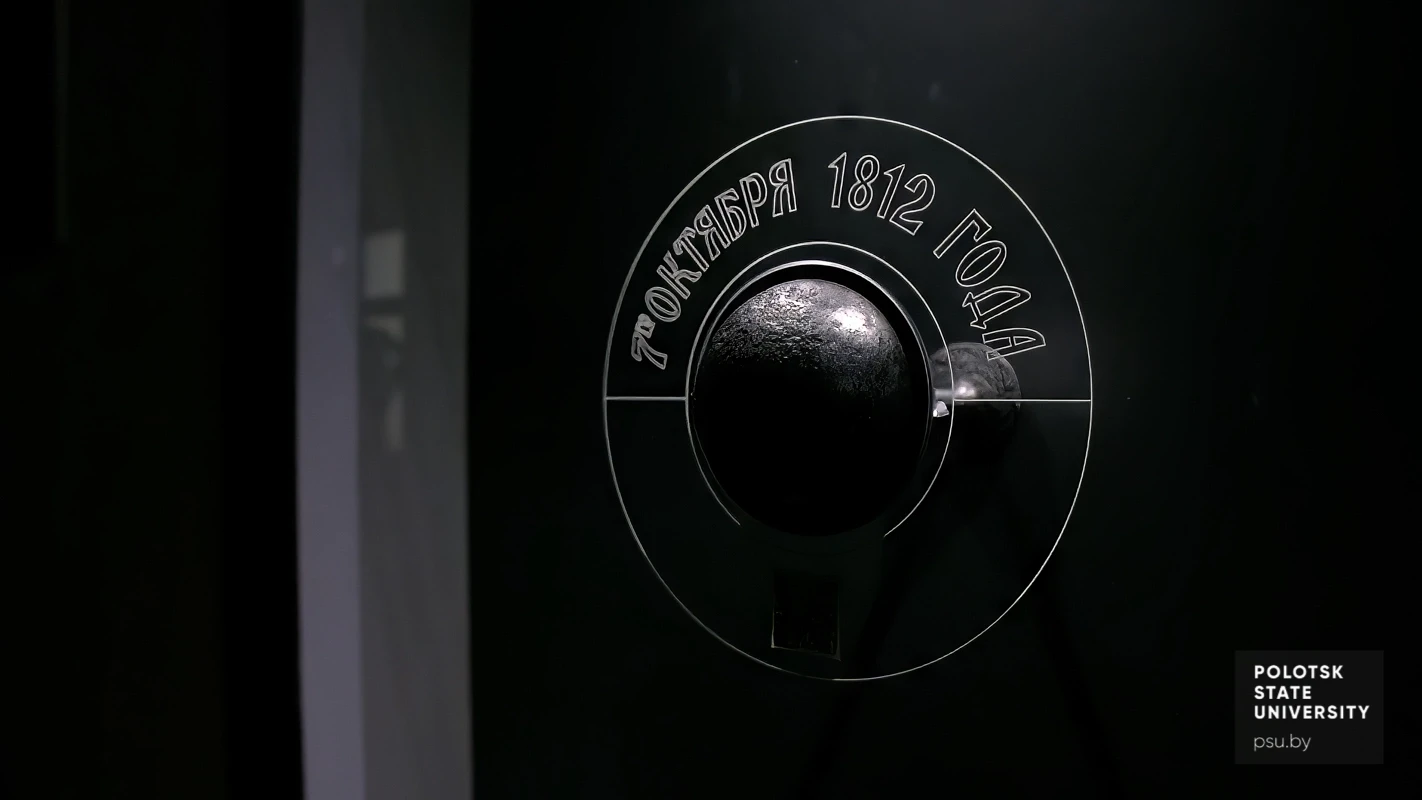
Wittgenstein Core
Traditions of veneration of the core were preserved for a long time until the evacuation of the campus from the town in 1914 in connection with the approaching front during the World War I. Most of the relics had been removed, but the core was still there. Later, with the advent of Soviet power in the cadet campus, it was decided to organize courses for red commanders. Within the framework of the Bolshevik ideology, all the former things had to be eliminated. The bomb was removed from the wall, and its further fate remained unknown for a long time.
In 2012, during the restoration of an old Jesuit well, an artillery shell was found at the bottom along with the remains of dishes decorated with the ‘P.C.’ brand. After the conducted research, it is posiible to confirm that this is Wittgenstein core, which after more than 100 years has become the central element of the Gallery of Graduates of Polotsk Cadet Campus.
Euphrosyne Polotskaya State University of Polotsk reveres the historical heritage of Polotchina. In 2023, the Glorious Chronicle exhibition project was opened in the walls of Polotsk Collegium, and the legendary Wittgenstein Core became the central exhibit.
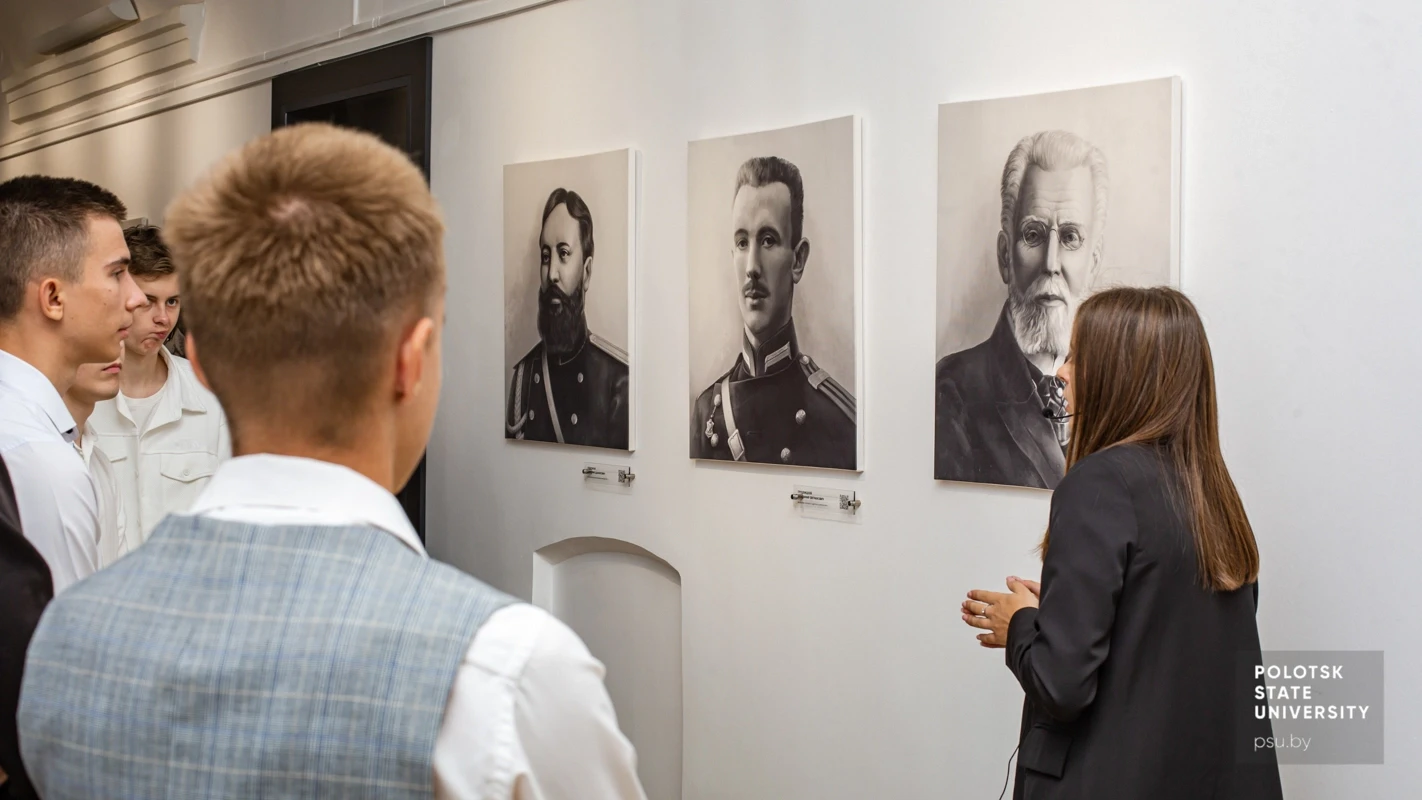
Gallery of Graduates
The period of existence of Polotsk Cadet Campus is an integral part of the history of our university. The idea of creating an exhibition dedicated to outstanding graduates of this educational institution originated long ago and belonged to Evgeny Glazyrin, a senior lecturer at the Department of History and Tourism. He collected detailed biographical information about former students of the cadet campus, in particular those who distinguished themselves in various fields of science and public life. These materials became the basis for creating the Gallery of Graduates.
From a considerable number of ‘best’ it was necessary to choose ‘the best’, which in fact turned out to be a very difficult task, because almost everyone has a whole list of merits. As a result, the walls were decorated with portraits of thirteen persons, famous for their scientific works, discoveries, inventions, and military valor.
The project took more than a year to complete. The content and visual aspects of the project were elaborated in detail. Undoubtedly, ‘that special something’ was the Wittgenstein core. It is noteworthy that it was during the preparation of the project that it became clear that the artillery shell, which had long been in our hands, is the very legend, a relic for entire generations of Polotsk cadets. Now the core has regained its rightful place in the first-floor corridor.
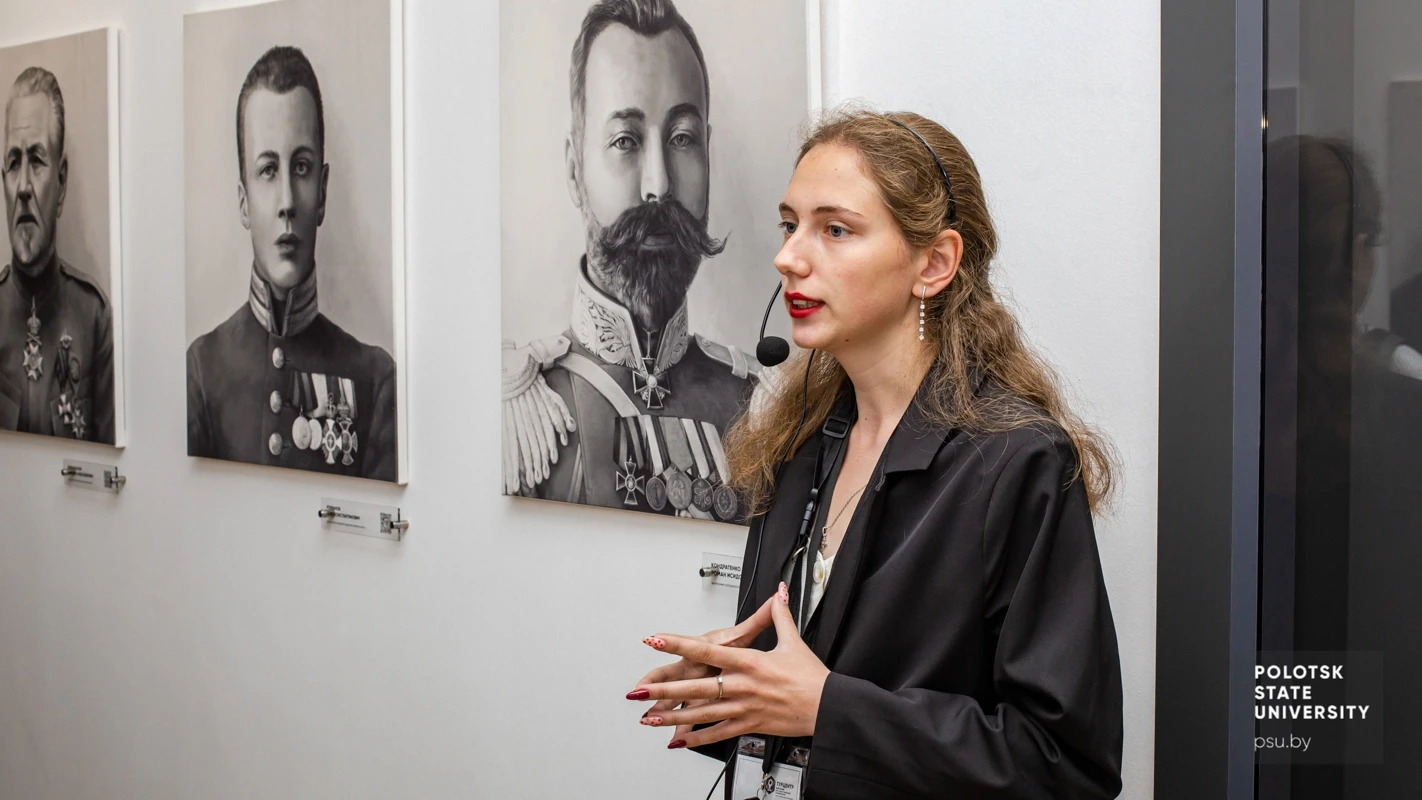
Gallery of Graduates
For more than 80 years of its existence, more than 3,000 students have come out of Polotsk Cadet Campus. Many of them have become famous as outstanding military and state figures, scientists who have made a significant contribution to the development of world science, representatives of various types of art. Graduates of the campus became heroes of the Fatherland. Thanks to this educational institution, Polotsk has become one of the centers of higher education in Europe.
The exhibition project Glorious Chronicle introduces us to the history of 13 outstanding graduates of Polotsk Cadet Campus, whose portraits were made by Maria Mukhomorova, a leading design specialist of the Department of Public Relations of Polotsk University.
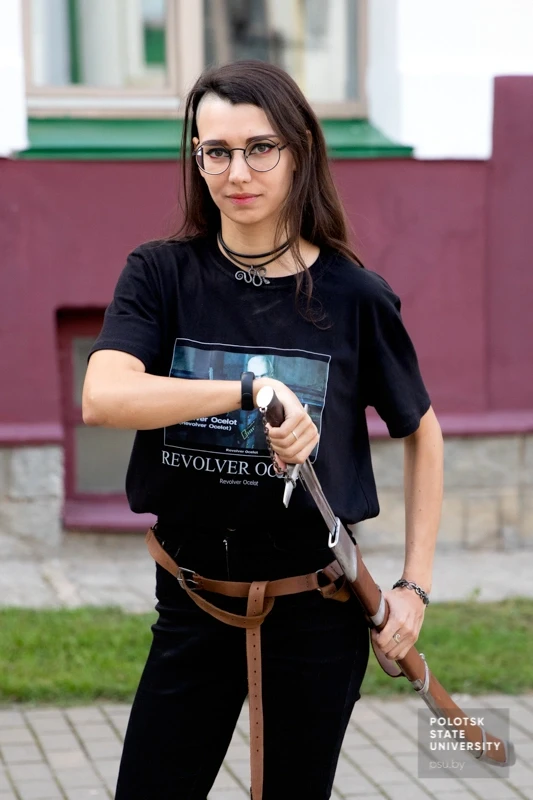
M. Mukhomorova
Maria, why did you decide to take part in such a significant project?
In the Glorious Chronicle project, I saw a great opportunity to show off my artistic skills. I like challenging tasks, find it a challenge for me and an opportunity to gain valuable experience and become a better specialist. Also, in this project, it was important for me to contribute to the preservation of the history of Polotsk land, to pay tribute to significant historical figures who influenced the development of science and society.
Why was it decided to draw them manually?
According to the idea of the gallery's project, it was assumed that the portraits would have a size of 65x75 centimeters. The original photos of the graduates were of very poor quality. In fact, the available resolution of the photos allowed reproducing them in the size of no more than 5x7 centimeters. A lot of details, such as facial features and breastplates, were indistinguishable. Also, the photos were very different from each other in terms of composition, tone, lighting, background color, and degree of detail.
The details of each of these photos would have to be restored manually in one way or another and all the portraits would have to be restored to their general appearance. Of all these techniques of image reconstruction, I am best at digital painting. In addition, the pictorial manner of presenting portraits with subsequent printing on canvases would best reflect the concept of the project – a kind of symbiosis of historical and modern, preserving and multiplying the experience of past generations in the context of cultural and scientific progress, combining the principles of traditional art with current technologies and trends in the field of computer graphics. Based on all the above factors, we decided to draw the portraits manually.
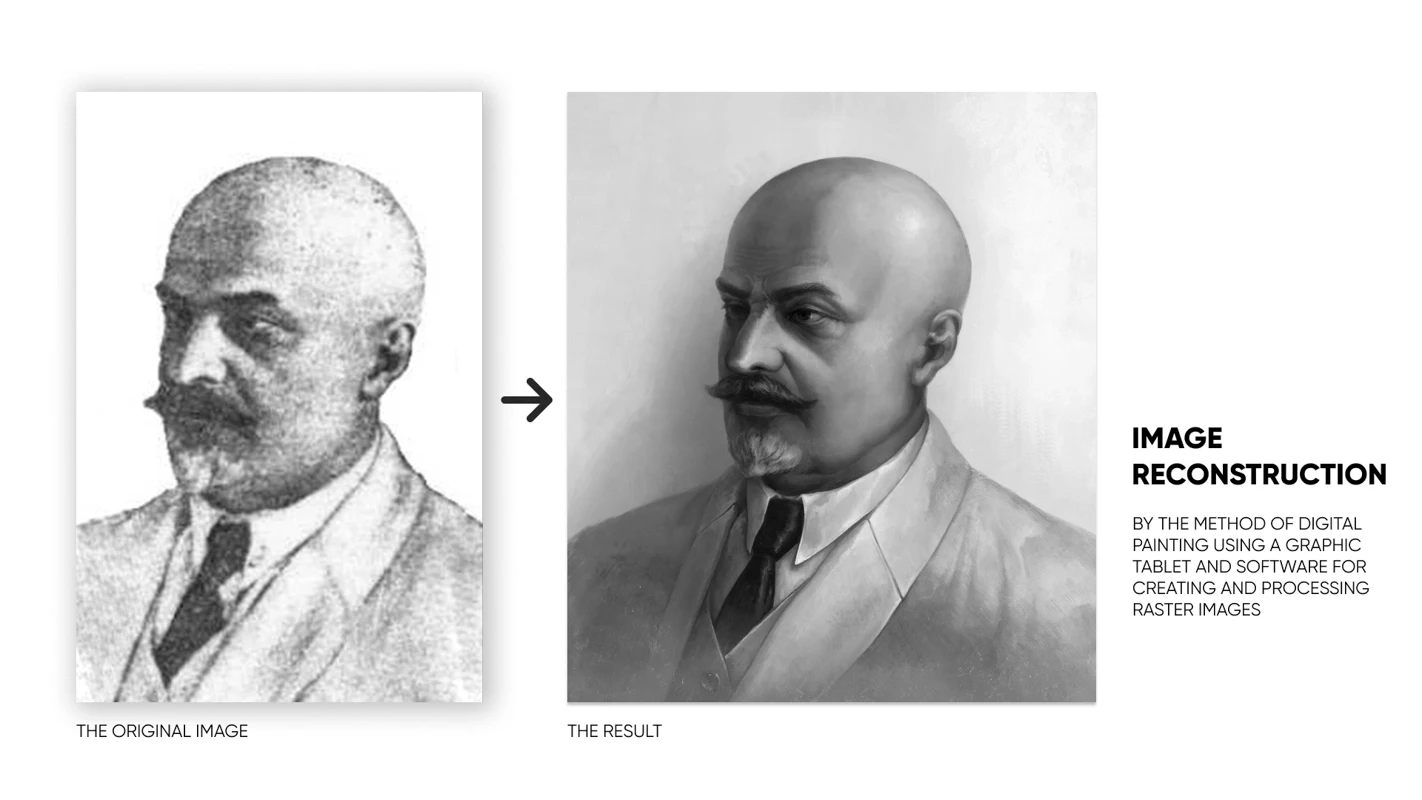
What were your inspirations when painting portraits? How long did it take to write them?
One portrait took an average from 1-2 weeks to a month, depending on the complexity of modeling lighting, the number of important details and nuances of the appearance of each historical person. I was inspired by both the works of old masters and the works of modern and significant digital artists. In my works, I always try to combine the experience of the old and new school of painting.
Did you remember any of the portraits you painted? Why?
I want to say that I remember each portrait in one way or another. All these people have a very bright appearance and history. Most of all, I want to highlight three portraits. The first is Alexander Milovich. It was the first portrait I ever painted of a series of graduates. The original photo of this historical figure was the most ‘poorly preserved’: low resolution, strong contrast of light and dark areas with rough transitions, against which it was hardly possible to distinguish any facial features. I had to put all my effort, all my skills and flair, to recreate the face as accurately as possible.
The second graduate I remember is Nikolai Brzhozovsky. His appearance struck me as very colorful – the stern expression on his face, the furrowed brows, the stern gaze fixed on the distance – in short, everything in the appearance of this man speaks of what great fierce battles he went through in his life. While working on this portrait, I tried to preserve the image of a battle-hardened warrior.
The portrait of Roman Kondratenko became the third memorable work. This graduate also has a very bright appearance with a lively look directed at the viewer. The original photograph of Roman was in low resolution, and work on the portrait was complicated by the rich decoration of the uniform, and the presence of six awards. It took me a lot of time and effort, in addition to expressive facial expressions, to accurately draw all the awards, filigree embroidery on the collar and epaulettes.
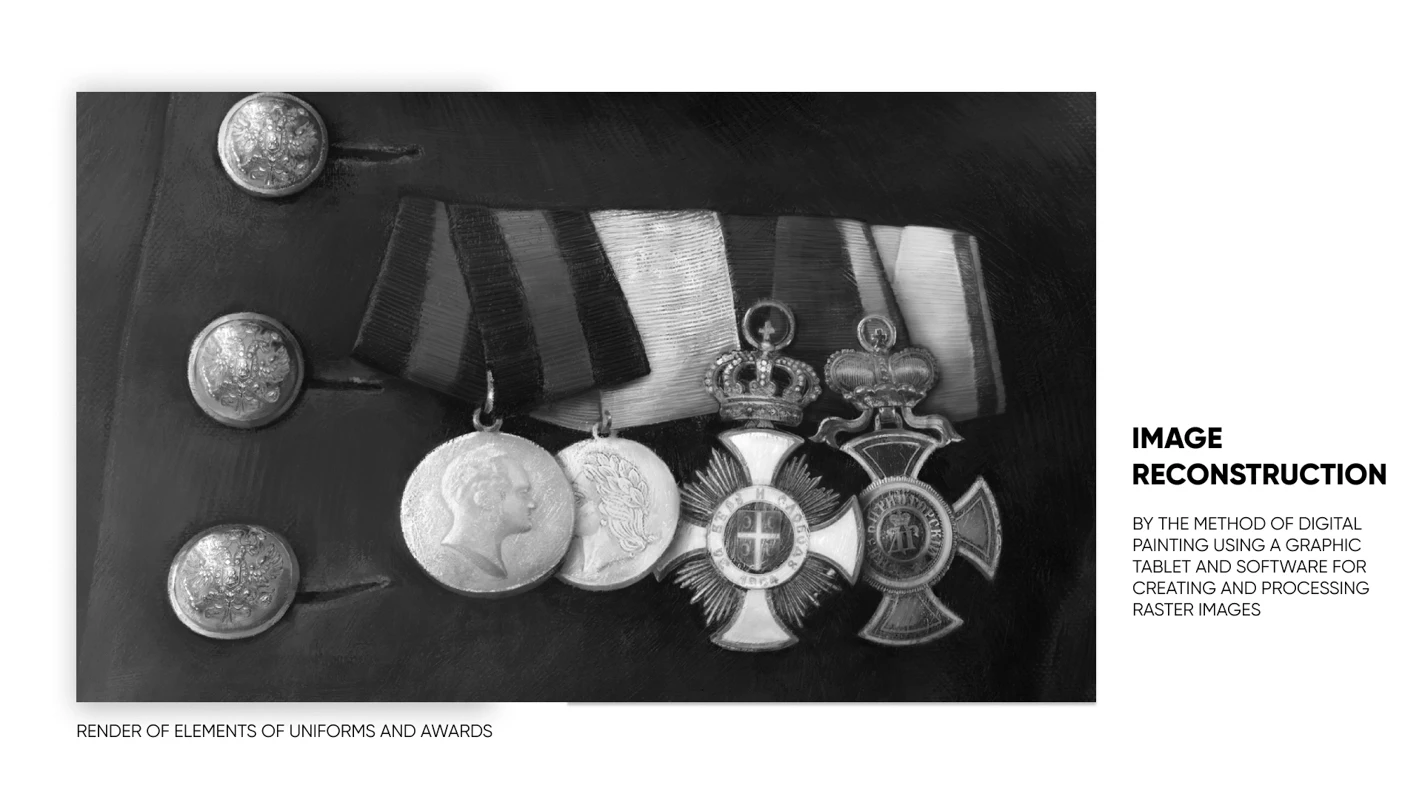
Were there any difficulties when painting portraits?
Working on any project that involves the active use of creative skills is always a complex and intense thought process. Even if as an artist you have a well-developed pipeline, have a great sense of nature and see chiaroscuro, volume and tone well. Working on a picture almost always turns into finding the most successful solution, whether it's a balance between generalization and detail, more or less emphasis. It is important for an artist to know when to stop and leave the canvas at its best. I can say that this is exactly what caused the greatest difficulty in working on portraits – observing the ‘golden mean’ between perfectionism and minimalism. A violation of this balance led to a loss of portrait similarity and integrity of the composition.
What techniques of portrait reconstruction did you use? How did you learn this?
In my work, I used method of digital painting, which involves the use of painting techniques and digital brushes with imitation of traditional materials: canvas, pastels and oil paints. At the initial stages of my work, I used neural networks. Contrary to popular misconceptions, neural networks are not able to do all the meaningful work for an artist. But they can give a good hint: how best to visualize the material and texture, which details of the appearance to make more accentuated to achieve portrait similarity. New technologies simplify and optimize the process, but they won't do even a tenth of the job of a qualified professional. I got a certain academic background at the I.F. Khrutsky Children's Art School in Novopolotsk and during my studies at Polotsk University, majoring in Design. I started working on digital painting in my last year, seeing more opportunities and tools in this direction, unlike traditional painting, to implement my ideas and projects.
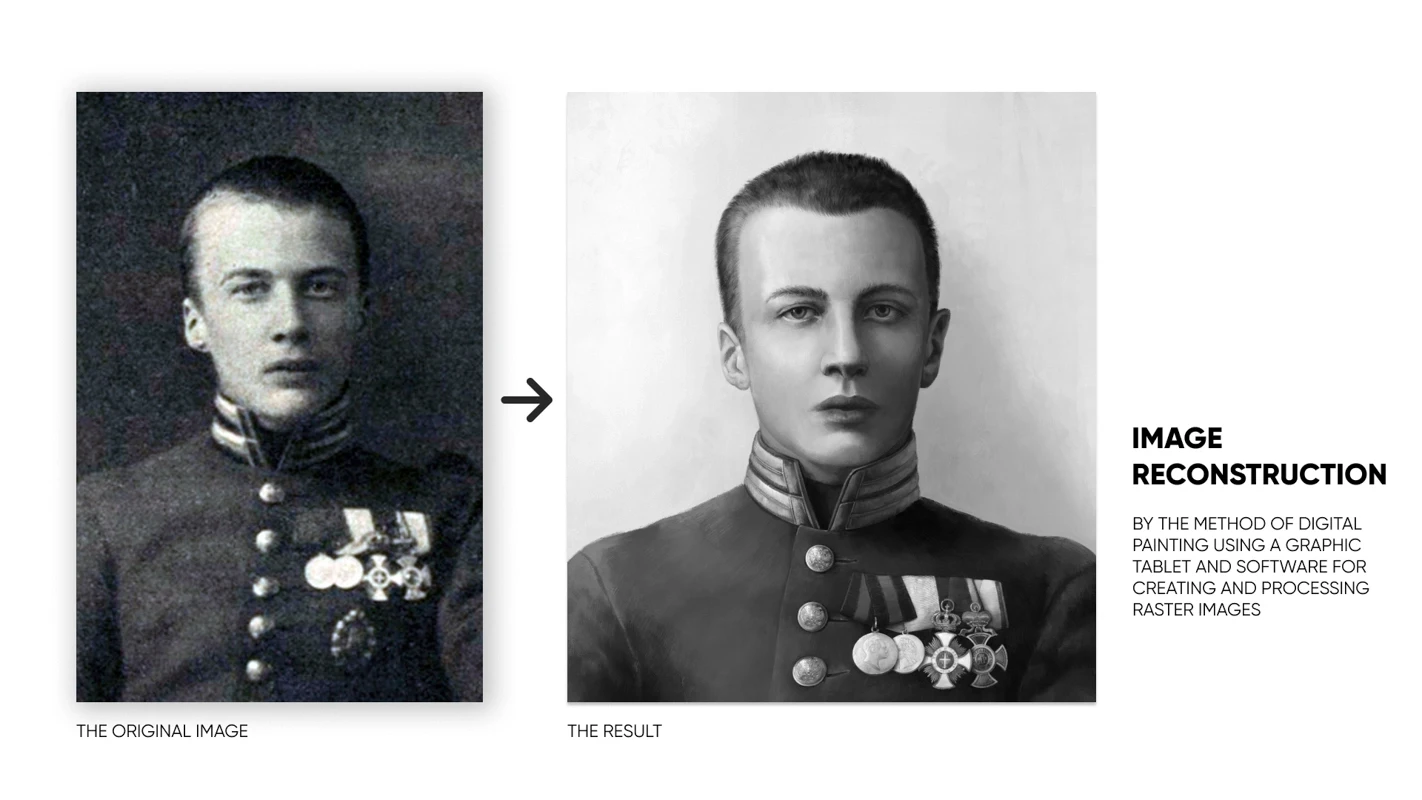
The project Glorious Chronicle immortalized the names of Polotchina great graduates not only in the exhibition of the Gallery of Graduates of Polotsk Cadet Campus, but also in the memory of the current and subsequent generations of students of Euphrosyne Polotskaya State University of Polotsk. We are proud of our history!